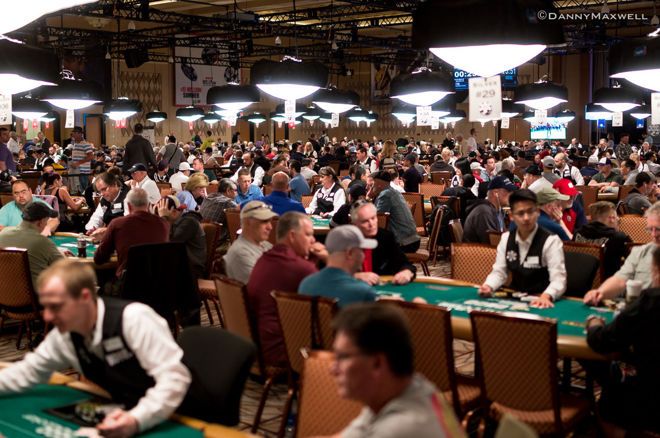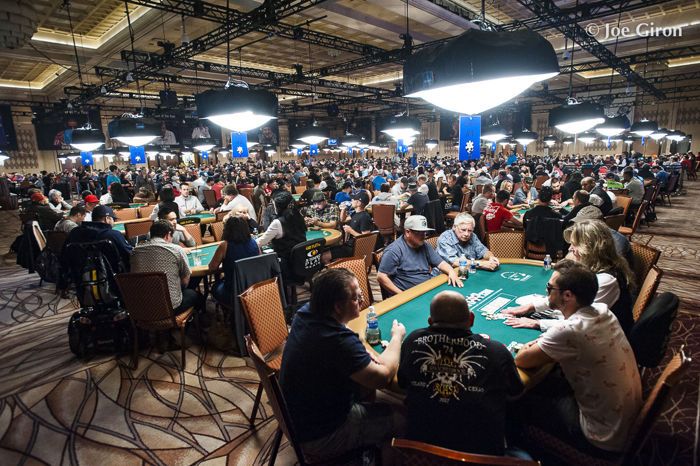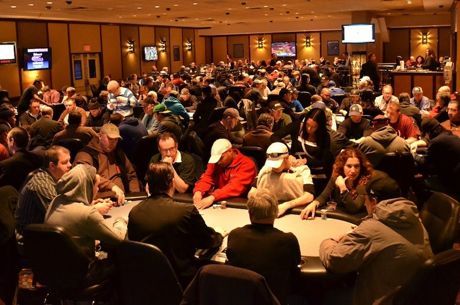WSOP Millionaire Maker Advice: Common Misconceptions and Mistakes

Poker players from around the world �� Rejoice!
The 49th annual World Series of Poker is underway! Every summer that I arrive back in Las Vegas, countless fond memories come flooding back. I am always so anxious to get back onto the felt at the WSOP.
However, after already playing in a few events this year, I'm reminded of some of the common misconceptions and mistakes that poker novices make while playing at the WSOP.
Many players are so eager to play in a bracelet event they don't consider that they may be playing in a different scenario than what they are accustomed to. I'm not referring to the level of play (which also could be higher than they are used to), but just some fundamental thoughts that novices may be overlooking.
Patience is a Virtue
If you read my previous article, "Don't Wait at the World Series of Poker", you know that I despise waiting. Thus, the irony is that my first advice when you play at the WSOP is to WAIT!
Wait for the cards and good situations. Don't force the action. Too many amateur players are accustomed to playing in a much faster structure with more starting chips in their home game, local leagues, or nearby casino/card room. Most players also play with shorter time levels, such as 20 minutes per level, and with starting stack commonly in the 10,000 to 20,000 chip-range.
These two factors induce players to take many chances early, including bluffing. Overall, these players feel that with so many starting chips, they can take risks, especially if there's a rebuy.
Even though you have fewer starting chips than you may be used to, you have more time to play at the WSOP.
The situation at the WSOP is completely opposite. Here, the levels are much longer (commonly an hour), but the starting chips are fewer (typically five times the buy-in amount). Therefore, the players have more time to wait, but less room for error, especially at the beginning of the tournament. And since amateur players love to bluff, they can lose incredibly valuable chips early on if they get caught.
Subsequently, these players will try to force the issue and try to get back their lost chips, thus often leading to their elimination. In the end, the players often complain that they don't have enough starting chips at the WSOP.
Let me show you mathematically how this misconception is incorrect. Just after a few hours, due to the lengthy levels at the WSOP, players actually have more big blinds than in your commonly played home game.
Let's use a typical 2018 WSOP $1,500 no-limit hold'em event, such as the Millionaire Maker which starts today, as an example. Players begin with 7,500 starting chips with one-hour levels. I will compare this to a typical home game structure which often starts with 20,000 chips with 20-minute levels.
For comparison and simplicity sake, let's just use the WSOP blind structure for both tournaments (which is most probably much better than the typical home version). Additionally, I assumed that the player maintains his or her starting stack to compare the remaining big blinds. This assumption would seem very concerning since the WSOP structure starts with such a "small" stack, but you will see below that after a little more than two hours of play, players will prefer the WSOP structure.
| WSOP (starting stack 7,500) | Home Game (starting stack 20,000) |
| Time Elasped | SB | BB | Ante | Big Blinds | SB | BB | Ante | Big Blinds | |
|---|---|---|---|---|---|---|---|---|---|
| 00:00 | 25 | 50 | 150 | 25 | 50 | 400 | |||
| 00:20 | 50 | 100 | 200 | ||||||
| 00:40 | 75 | 150 | 133.3 | ||||||
| 01:00 | 50 | 100 | 75 | 75 | 150 | 25 | 133.3 | ||
| 01:20 | 100 | 200 | 25 | 100 | |||||
| 01:40 | 150 | 300 | 50 | 66,7 | |||||
| 02:00 | 75 | 150 | 50 | 200 | 400 | 50 | 50 | ||
| 02:20 | 250 | 500 | 75 | 40 | |||||
| 02:40 | 300 | 600 | 100 | 33.3 | |||||
| 03:00 | 75 | 150 | 25 | 50 | 400 | 800 | 100 | 25 | |
| 03:20 | 500 | 1,000 | 100 | 20 | |||||
| 03:40 | 600 | 1,200 | 200 | 16.7 | |||||
| 04:00 | 100 | 200 | 25 | 37.5 | 800 | 1,600 | 200 | 12.5 | |
| 04:20 | 1,000 | 2,000 | 300 | 10 | |||||
| 04:40 | 1,200 | 2,400 | 400 | 8.3 | |||||
| 05:00 | 150 | 300 | 50 | 25 | 1,500 | 3,000 | 500 | 6.7 |
As you can see, the home game players have plenty of room during the first two hours. They start out with 400 BBs, while the WSOP "only" starts with 150 big blinds.
But after only two hours of play, the number of big blinds are equivalent for both tournament structures. After three hours, the WSOP's number of big blinds is twice as large, and four hours in the WSOP's number of big blinds is triple the home game's number of big blinds.
Now, if the home game starts with fewer chips (e.g., 15,000) and shorter levels (e.g., 15 minutes), the situation becomes even more dire for the home game structure.
Therefore, when you sit down to play a WSOP tournament, change your mindset and remain patient. Even though you have fewer starting chips than you may be used to, you have more time to play at the WSOP. You can't force the situations or else you will be out of the tournament quickly.
Be Wary of the Short Stack
Now that I have explained why many novice players may lose chips early, I will now describe a situation that directly results from this.
As some players become short-stacked, they eventually will have to make a stand and shove all in, possibly with a marginal hand. However, other players, with average or big stacks, are so focused on their own game that they do not recognize this short-stack situation.
Players, especially in late position, may raise with a sub-par hand without recognizing that a short-stacked player is behind them.
As with any poker tournament, players will need sometimes to steal blinds and antes in order to survive. Players, especially in late position, may raise with a sub-par hand without recognizing that a short-stacked player is behind them. After a raise, the short stack may decide to shove all in with an average hand.
Since the short stack will not have a significant stack remaining, the original raiser will be forced to call, revealing a weak hand and confirming that he or she was just trying to steal the blinds and antes. Even worse, the player is so embarrassed that he or she folds, basically giving away chips for free.
In summary, players sometimes put themselves in an embarrassing position because they just robotically raise without being observant. So the next time you have a sub-par hand, but are considering raising to steal the blinds and antes, make sure that the players sitting behind you are not very short-stacked, especially from the blinds.
In general, if they have over 10 big blinds, they will have enough chips to fold. But if they have fewer than 10, they may shove their remaining stack with any high card. Thus, you may just want to fold in this situation and save your valuable chips for another hand.
Top 15 Percent Cashing
Everyone's dream is to win a WSOP bracelet. But, if you can't take home the coveted hardware, cashing in a WSOP event is definitely a solid consolation prize. Taking home some money from a WSOP bracelet event is still something to brag about at your home game.
As the event progresses, make sure you remember this different payout structure and play accordingly.
Many of you are accustom to the top 10 percent of the field finishing in the money. However, in 2016, the WSOP changed its payout structure where the top 15 percent of the field is in the money.
Some players don't realize this computation until it is too late. They play too aggressively when they are closer to the money than they realized. Of course, the goal is to win and take home the gold bracelet, but cashing in an event is never a bad thing, especially if you are shorter-stacked and could make the money. As the event progresses, make sure you remember this different payout structure and play accordingly.
Follow Bernard Lee on Twitter and Instagram: @BernardLeePoker.










